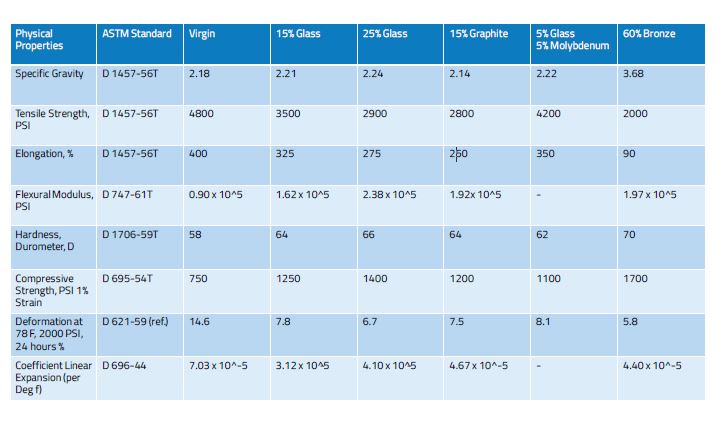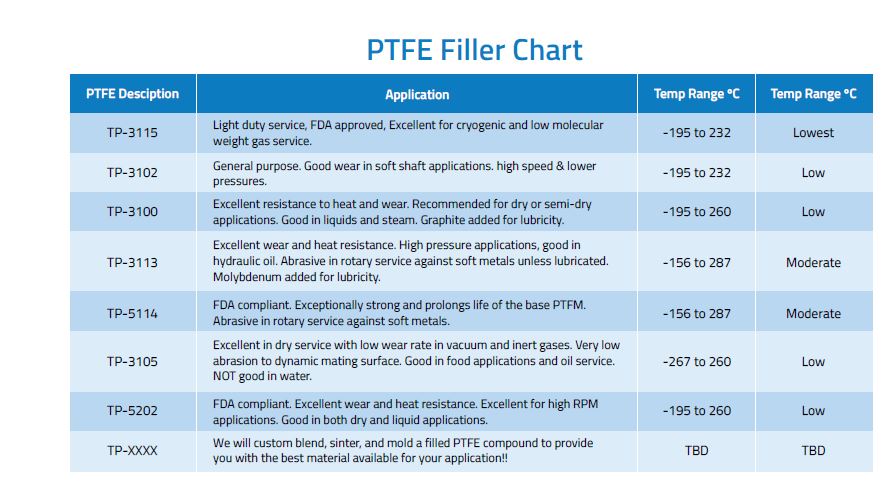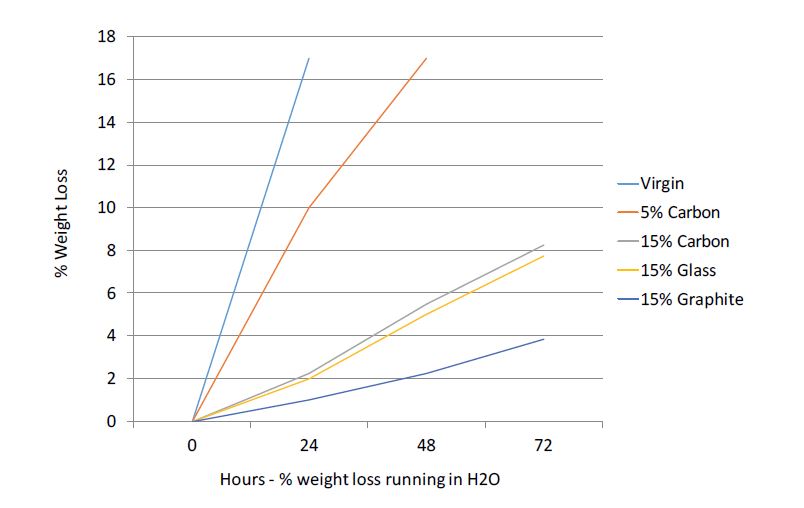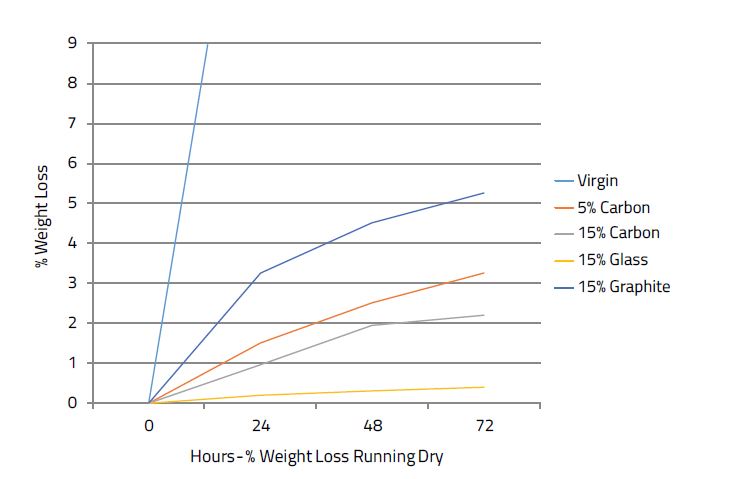PTFE Resins Commonly Used in Seals
In this article, we’ll look at the fillers employed in PTFE resins.
In its virgin form, PTFE resin isn’t the best sealing material for dynamic shaft applications. Therefore, different fillers are added to achieve the desired results. The most common fillers are fiberglass, graphite, carbon, coke flour and molybdenum, although any filler can be added to virgin PTFE resin as long as the material can withstand maximum sintering temperature of 710-730 degrees F.
In order to develop lip seal products properly from PTFE resins, it is vital that the engineer understands the favorable and unfavorable characteristics of the resin.
Several characteristics and properties of PTFE resin must be considered to realize a reliable product. They are:
- High wear rate of the PTFE resin and/or mating surface when improper fillers are used for a specific set of operations.
- PTFE resins have a high thermal expansion rate and compressive “Creep” characteristics that can upset the desired contact pattern area of a seal if exposed to heat and/or load conditions.
- The high flexural modulus of PTFE results in a stiff sealing element compared to modern elastomer elements, which can limit PTFE’s ability to follow eccentric shaft movement.
- The stiffness and hardness of PTFE resins make seal elements vulnerable to damage upon handling and in installation.
Engineers can eliminate or offset these detriments by carefully establishing and applying proven PTFE seal design parameters and exercising strict control when processing PTFE material. But adding the proper type and amounts of filler by itself can lead to these improvements:
- Thermal expansion reduced by a factor of 5.
- Wear resistance increased by a factor of almost 1,000.
- Resistance to “creep” increased by a factor of 10.
Adding a filler can also increase undesirable characteristics. For example, including glass fiber will improve wear and creep resistance, but could also increase the compound’s stiffness and abrasiveness.
Since wear is the most significant property of PTFE resin influence by fillers, filled PTFE resins have undergone considerable testing where wear rate is the basic unit of measurement to determine functional acceptance of a compound.
There is a lot of literature from PTFE resin suppliers and fabricators regarding wear, and this information will be acceptable to select compounds in most product applications.
However, for radial lip seal products, wear rate testing must also consider the process cycle of the PTFE material and the final method of element fabrication. We recommend the test specimen for lip seal wear data closely resemble the final element configuration.
To illustrate the wear performance of filled PTFE compounds, five filled compounds were processed in the same molding pressure cycle and sintered on the same time and temperature testing span. Identical conventional wafer elements were then machined from the billets of material and tested on wear test fixture, shown on table 1.
In figures 3 and 4, we see the rate of wear by weight loss after running intervals of 12, 24 and 72 hours. Note that unfilled virgin PTFE was also tested to show the effect of filler on wear rate.
Wear data representing filled PTFE compounds in lubricating media is now shown, because the presence of lubricant extends the noticeable wear point beyond 1,000 hours. Even then, the wear rate difference between compounds is minimal unless factors like speed, temperature and pressure increase greatly.
The choice of filler type and material processing cycle is still largely dependent on the results of empirical tests. Continued development and engineered approaches to PTFE lip seal design and manufacturing methods is establishing filled PTFE resins as an acceptable sealing material.
To learn more about PTFE, download Gallagher Seals’ rotary seals guide.




